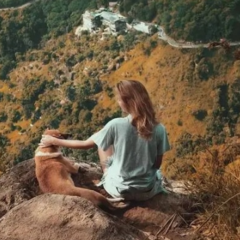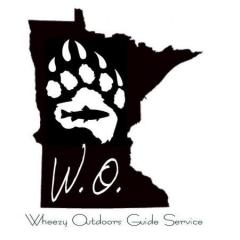Search the Community
Showing results for tags 'fishing'.
-
Trout fishing is very adventurous. There's a lot you need to know if you want to fish for trout from a lake near the shore. Trout will instinctively congregate in areas where food, shelter, and other necessities are plentiful. Trout fishing in the lake is very efficient. Many areas stock their lakes with trout, which means there is plenty to catch. But trout fishing in a lake is very different from fishing in moving water. Even experienced river and stream anglers must vary their bait and technique. Pristine nature, icy clear waters and fishing techniques will test your skills. However, not all trout fishing involves fording wild rivers, and you can catch them from the lake shore. Find the Trout’s food Like any fish in a lake, trout have some very specific needs. The most important thing is the food. In moving water, trout can stay anchored in one place and let the current carry food to them. But in lakes, trout have to swim around to hunt. Unlike catching trout in moving water which means finding pools and eddies, catching trout in a lake often means finding trout food. Know the water temperature There is also a question of temperature and oxygenation. Like all fish, trout are cold-blooded, meaning their metabolism depends on the temperature around them. They thrive at certain temperatures, but anything above 70ºF can be fatal to them. If the surface water gets too hot, they start moving deeper. Keep this in mind when you are fishing during the warmer weather months. Cold water also contains more oxygen than warm water. But that doesn't mean the deeper and colder you are in the lake, the more oxygen you have. The water at the bottom doesn't usually circulate with the water at the top during the warmer months, meaning it doesn't get replenished with oxygen when it's colder. Instead, the lake is divided into three basic water cycle zones. Knowing these areas of the lake is key if you want to catch the most trout. And by the cold lake from shore, the Ocoopa Union 5s rechargeable hand warmers are super ideal for a fisher. The hand warmer would deliver comfortable warmth to you in a flash, which is sufficient for the afternoon at the edge of the water. The low speed can provide up to 15 hours of heat, the Ocoopa Union 5s would accompany you all day long to keep your hands warm in the pockets. Moreover, the power bank mode of the rechargeable hand warmers is practical, you never know, it can be used someday. Check the terrain You can usually assume that what you see on the surface of the water reflects what is underwater. The steep slope down to the lake shore may continue below. If you see an island in the middle of the lake, that's an underwater mountaintop. It's not perfect. But paying attention to the surrounding terrain will tell you a lot about the lake. Trout certainly know the terrain. The steep slope toward the shore allows trout to inhabit the cooler parts of the lake while being close enough to catch food on the shoreline if needed. The shallows are an excellent breeding ground for trout. A thin strip of water between two islands or between a coast and an island is a bottleneck for small fish that trout like to catch. When to fish for Trout in a lake Wait for warming weather Note that it’s warming, not heat. Once the weather gets hot enough, trout become sluggish and retreat into cooler water. But water takes longer to heat up than the surrounding air. If the weather has been cool for a while, the warm stretches will kick-start the trout's metabolism and they will be hungry. This makes spring and early summer the best times of year to fish for trout, especially on the lake shore. They have been eating very little all winter and need to start refueling. They will hunt farther, shallower and less picky than at any other time of year. For lake and brook trout, which prefer colder water than their relatives, this feeding frenzy could happen soon after many lakes freeze over. Rainbow and brown trout occur a little later, but all species will be very active for a week or two after the ice disappears. Dawn and dusk The best time to fish for trout on the lake shore is almost always in the morning. This is when trout are most active. Mornings are also coolest in the shallow waters closest to shore, which trout prefer. The next best time is closer to dusk as the water starts to get cold again.Midday fishing can be hit or miss, depending on the weather. Overcast days will extend your window by controlling the sun's heat and brightness. Look for clouds Trout don't like bright sunlight. They are more active on cloudy days. Rainy days are even better. Rain washes bugs, worms, and other tasty treats into the water. Rainwater is also rich in oxygen, which provides energy for trout. The stream widens, bringing more nutrients and oxygen into the lake. Take this opportunity to set up some trout near the inlet of the lake shore stream. They'll be there for dinner, which means you should too!
-
One of the most anticipated times of the year is winter ice fishing. Whether you've never been, are just getting started, or have been ice fishing your whole life, here are some tips and tricks for fishing specific species in the winter.Fish feeding and behavioral patterns often change as the seasons change. If you wish to target a specific species, you can choose the depth, bait size and location (such as near shore or around land sites that extend into deeper water) to increase your chances of catching that species. Brook trout: The number one tip for ice fishing brook trout is to stay shallow. Brook trout prefer shallow inshore habitats in winter, and the best brook trout are found in water depths between 4 and 12 feet. Although some prefer less than 5 feet of water!Brook trout are especially hungry in winter, so using worms or live bait can be very effective on slant and small tackle (be sure to check the regulations to make sure these baits can be used in the waters you plan to fish). Lake trout (tongue): If you're fishing for lake trout (togue), try fishing around land spots that extend into deeper water. Focus on water depths 15-40 feet from these landmarks. Large tongues roam these areas in search of food and are often caught close to the surface and bottom.Lake trout can be found at different depths, so using a combination of traps and jigging can help you determine at what depth they feed. Inland Salmon: Inland salmon are often caught "under the ice" and should be fished within 15 feet of the ice.Ice fishing for inland salmon can also be very productive in winter using smelt or other legal baitfish of similar size (such as common silverfish, silverbait, or eastern silver minnow).2 to 5 feet of 6 or 8 lb fluorocarbon line tied directly to the hook behind the ice line will minimize gear visibility and may result in more flagging. When working with smelts, the #8 hook size is ideal. Splash: Splake is a hybrid trout, a cross between a brook trout and a lake trout. This cold water species is easy to catch and offers excellent winter fishing opportunities.Splake feeds primarily on smelt, white bass, yellow perch and minnows. Therefore, baiting with baits that mimic these species can be very effective. Tips On Stay Warm When Fishing in Winter Nothing makes a day on the ice more miserable than getting cold feet. Learning to keep your feet warm while ice fishing is essential if you want to catch more fish so you can spend more time outside. It's easier said than done, but there are plenty of ways to beat the cold and warm your feet and body. 1. Stay dry. If you want to stay warm, you need to stay dry. Yes, it may seem like an easy task, but even the smallest leak in your wader pants can be a real problem in winter. The water temperature is usually not much above freezing, and even the tiniest trickle can soak the warmest wool socks and end your day early. Before you go fishing, make sure your wading boots will hold up. Also consider the need to keep your hands dry, which is not an easy task, especially when you are catching and releasing trout. Remember to keep a dry hand towel in the pocket of your wading jacket so you can dry your hands after releasing a fish. 2. Keep your extremities warm. When fishing, your feet and hands (and your ears and nose) often bear the brunt of the cold weather. Warm socks are a must – wool socks under wader pants when fishing in winter – and hand warmers are often required. With the Ocoopa Union 5s Rechargeable Hand Warmer, you get a simpler but better experience. It features 4 levels of adjustable heat for an enhanced hand warming experience. You can choose how much heat the hand warmer emits. Then, once the battery dies, all you have to do is plug it in and charge it for later. The rechargeable battery allows you to charge the hand warmer outdoors for 15 hours anytime, anywhere. 3. Anything But Cotton (ABC). If you only take one thing away from this tip, it's this: Anything But Cotton (ABC). Wool dries faster than other materials, but the general rule is best described by knowing your ABCs. Cotton soaks in water quickly but dries slowly, so it is not suitable to wear it next to your body when fishing in winter. Again, follow the simple ABC rules and consider fleece or microfleece tops and bottoms. If it's really cold, wear your thickest pair under your wader pants. For warmer winters, a thinner fleece. 4. Drink plenty of water. Drink water, even if it's not hot. Hot tea and coffee may help, but both are diuretics, which means you may need to get out of the water more often to answer nature's call. Hot alcoholic beverages? Avoid them, or wait until you get back to the car or truck. While you may feel warm when descending, alcohol can actually lower your body's core temperature. 5. Has everything you need to start a fire. Even just some kindling and a lighter are worth carrying in your fishing vest. If you or a buddy dunk and you're not near your car or truck, a fire by the creek could save your life. And, let’s be honest, it’s always nice to have a fire to keep warm on a cold day.
-
It’s one of fishing’s most common questions – what’s the best choice: real bait or fishing tackle, such as artificial lures?Each approach to catching fish has its particular strengths and weaknesses, and each one is better suited to different conditions, environments, target species, and levels of angler competence. Main Types of Fishing Bait The following is a list of the most common types of fish bait found at a live bait & tackle shop: l Worms: Nightcrawlers and Redworms l Leeches: Jumbo and Large Sizes l Minnows: Flatheads, Shad, Golden Shiners, Suckers, and Creek Chubs l Insects: Wax Worms (Grubs), Meal Worms, Crickets and Grasshoppers Fishing with live worms Worms are a staple at bait shops, and fishing for them is the most common live bait choice in the United States. Nightcrawlers and Red Worms are popular choices that you can buy at your local bait shop or dig them up in your own backyard. These are usually sold or stored in foam containers with breathable lids. A dozen or two dozen worms should do the trick for a day. Fishing with leeches Leech fishing is popular in deeper waters for large game such as walleye. However, it is also a good alternative to worms when targeting Panfish. Ranging from small to large, these slippery critters from the bait shop won't suck your blood and are great for sorting through smaller bites. Leeches can be used with both basic and advanced rigs, and they are versatile. Fishing with live minnows Small fish are the most challenging type of bait, but larger fish can be caught. Most introductions focus on providing lively, small fish near their natural location in the water you fish, which should be where the predators you are catching are feeding. This is usually near the bottom where there is cover such as rocks, boulders and vegetation. However, positioning this bait based on structure (i.e. changes in depth and outbursts in bodies of water such as drop points, points or humps) is also a factor. Baitfish school and navigate based on the structure of the water body, so offering your minnow to a baitfish school (like the edge of a point) will often connect you to a predator. All small fish should always be stored in water in small fish buckets Fishing with live insects Insects are the least common type of bait, but are ubiquitous in pet stores and on grasslands across the United States. If you live in the North, grubs are the default option for ice fishing, while crickets/grasshoppers are probably the most popular choice for trout fishing in creeks. These special forms are out of scope here, so the instructions are based on using the insects to target Panfish and Trout in lakes and ponds. Choose Right Fishing Bait Or Lures If you're just starting out, don't worry about mastering all types of lures. Start with the Nightcrawler under the buoy and catch a few fish. Once you have mastered the worms, you can start using leeches to catch larger panfish. From there, you'll be ready to target larger game fish such as bass, walleye, and trout with smaller fish. When To Use Baits Or Lures Having said that, there is no doubt that the best and most successful anglers are almost always those who use natural lures to reduce their fishing teeth. Lure fishing teaches new friends the absolute basics of the sport, including what foods fish like to eat, where fish expect to find them, and how and when fish hunt them. Whether you've dedicated your life to bait fishing, or moved on to lure or even fly fishing, knowing these basics of the sport will serve you well. Even better, finding, collecting, or catching your own bait instead of buying it from the store can amplify all of these important lessons. Bait collecting can teach an angler a lot about where the food fish catch lives, how they behave, and what they look like. These lessons will prove invaluable if you go ahead and try lure or fly fishing... and even if you don't, baiting your own will definitely save you a lot of money! Hunting and trapping In many ways, bait fishing is similar to hunting, while bait fishing is more like trapping. In other words, the baiter sets his or her "traps" (baited hooks) and waits for prey to stumble upon them. In contrast, bait anglers can cover more water in less time. Like a hunter with a rifle or bow, a bait caster or troller actively seeks out prey where his or her bait is actually bullets and arrows. Clearly, these two slightly different approaches have varying degrees of appeal to different anglers and have comparative advantages and disadvantages under changing conditions. There is no overall "best" approach, only better options for the day. When to use bait is best: At Night l When mentoring a new friend or child l When the water turns cloudy or changes color l When it's cold (especially when ice fishing!) l When targeting vegetarian and omnivorous species l Definitely the most important thing when eating! l In most catch-and-release fisheries l Where undersized and non-target “nuisance fish” are abundant l In clearer water l In warmer weather l For aggressive, predatory fish l On waters designated “artificial only” or “fly and lure only” During cold weather, we lose most of our body heat through our heads. A Buff or similar cover or mask can supplement your lid and help you retain heat. For your cold hands, bringing rechargeable hand warmers is a good idea. And something like Ocoopa Union 2s rechargeable hand warmers, you can separate them and put them in the pockets of your coat or jacket—this way, if your gloves or mittens get wet, you still have a hand warmer to warm up your fingers. Each hand warmer of MagTwins is armed with a 5000mAh rechargeable battery, which warms all day. On the flip side, it’s never a bad idea to put rechargeable hand warmers near your boot, perhaps under your wool socks.
-
WHAT AN INCREDIBLE SEASON IT HAS BEEN SO FAR, AND WE'RE JUST GETTING STARTED! Now, certainly hitting some of the best fishing of the season for ALL species!!! Walleyes have been on the chow on most of the midsized bodies of water along the weed edges, sunken humps and bars anywhere from 12” to 28” of water. Keep an eye on the primary transition areas such as sand to muck, boulders to gravel, weeds to sand (etc.) These areas are key right now. Leech Lake does have a bug hatch going on currently, but the fish are still active and hitting. Slowing down your troll, and using simpler presentations like a Lindy Rig, Slip Bobber, or Spinner or Slow Death Rig tipped with Crawlers, Leeches, or Chubs have all been producing exceptional numbers. The Bass have been extremely aggressive! Smallmouth can be found off the rock bars and sunken humps, hitting both Drop Shots and Swim Baits. Likewise, Largemouth Bass, can be found along the pencil reeds, out from docks and various surface structure, as well as in the cabbage beds. Spinner baits, Drop Shots, and Jerk Baits have all been effective in targeting the “bucket mouths”. Crappies and Bluegills can be found within the cabbage. As cabbage is just starting to peak, find the tallest and greenest cabbage which is close to deeper drops and you will find the fish! Small jigs tipped with Crappie Minnows or a Small Leech, or even rigging slowly over the cabbage has proven to be successful! We certainly hope you all have been out enjoying this terrific weather we have been having and been able to keep your lines tight! Cheers! -Alice Wiese Wheezy Outdoors
- 2 replies
-
- smallies
- fishing reports
- (and 8 more)
-
2007 Mercury Verado 275 4-Stroke (875 hours) 2007 Mercury 9.9 4-Stroke Two Gas tanks (one for each motor) 6 Seats (5 regular with pedestal - 2 air rides, 1 butt seat with pedestal) 6 RAM mount rod Holders 4 cup removable cup holders Original Tracker Travel Cover (ratchet style) 3 bank and 2 bank on-board chargers 36v MotoGuide Trolling Motor with foot pedal Lowrance electronics for console and front of boat with GPS AM/FM/CD player with aux input for an MP3 player 5 Batteries (3 for the bow mount) (2 for the electronics/main motor). Lowrance Marine radio with 4' VHF Marine Antenna. Tandem axle trailer with surge brakes, swing away tongue, spare tire and carrier, pro buckle tie downs for the transom. Please text if interested or if you have questions. Asking $22,000.00
-
I'm looking into insurance options for an Ice House and wondering what advice or recommendations anyone has on the best type of coverage. Also, if I want to be able to rent out my ice house when I'm not using it but not as an "outfitter" or "guide" would that be something that typical coverage wouldn't cover if a profit is being made since I wouldn't have the coverage that a company running as an outfitter would have? (Such as how normal car insurance doesn't cover an Uber driver when they are logged into the app and giving someone a ride because they are consequently on the road more often and making a profit.) Any and all information or recommendations would be extremely helpful!
-
People say there is a lot of weather involved. It can be right before a storm because the muskies will go into survival mode and try to stock up, sounds funny I know but they seem to. If the storm has been long and there hungry it will affect there appetite making the fishing better.
-
The Wife and I are getting out of town this weekend and going to do some camping up at Savanna Portage State Park in McGregor, MN. We used to camp a lot when we lived in Colorado but since we moved home we have only been once so we decided to change that. Neither of us have spent any time in McGregor so we're excited to see a new section of MN and a new State Park. We are going to bring the kayaks and try to get out fishing each day on some lakes up that way. I noticed a Trout lake in the Park that we will likely try and then we will probably leave the park and hit 1 or 2 nearby smaller lakes (as the wind will likely be a factor this weekend). Has anyone spent much time in the Park or the area? Any pointers on things we must see & do or recommendations on lakes in the area? Send me a message. I hope everyone is able to get out on the water this weekend as it's supposed to be WARM in most of MN.
-
- kayaking
- state parks
-
(and 2 more)
Tagged with:
-
Only $25,000 for a 1/6 share in a year round lake cabin on one of the best walleye lakes in northern Minnesota. Huge 9,000 acre lake. Excellent duck/goose hunting at rocky point on lot, great hunting, fishing and snowmobiling and ice fishing. One week every six weeks. Eight weeks of exclusive use per year with exchange privileges with the other 5 shareholders. Cabin is for shareholder use only, shareholder or immediate family must be occupying the cabin. No rentals allowed except to other five shareholders. Cabin sleeps six, with queen bed, bunk bed and queen sleeper couch, and sits on almost 2 acres/ 150 feet of shore line, sand bottom, with thousands of Chippewa National Forest land across the road. One RV hook up for family or guests. Operating costs split six ways, taxes, insurance, utilities, lawn care, snow plowing, repairs, etc. Interested outdoors persons only please. Great opportunity to enjoy the lake life. send private message for more info and pictures.
-
A few photos from my annual Rainy Lake fishing trip for seven days each fall. I can hardly wait to get back! 1. A number of evenings had Northern Lights, along with cloud cover! One of the clear evenings. 2. Some fishing action. 3. 4. 5. Some of the nicest fall colors I've ever seen up there! 6. 7. 8. Hard at work! 9. Beautiful nights at the lodge! 10. Can't wait to get back!
- 5 replies
-
- rainy lake
- fishing
-
(and 2 more)
Tagged with:


























